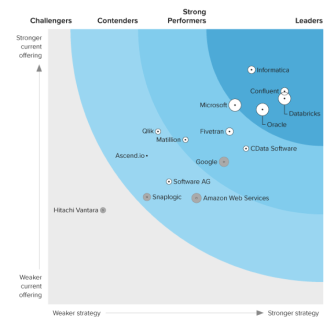Discover how a bimodal integration strategy can address the major data management challenges facing your organization today.
Get the Report →Replicate QuickBooks Online Data to Multiple Databases
Replicate QuickBooks Online data to disparate databases with a single configuration.
Always-on applications rely on automatic failover capabilities and real-time access to data. CData Sync for QuickBooks Online integrates live QuickBooks Online data into your mirrored databases, always-on cloud databases, and other databases such as your reporting server: Automatically synchronize with remote QuickBooks Online data from Windows or any machine running Java.
You can use Sync's command-line interface (CLI) to easily control almost all aspects of the replication. You can use the CLI to replicate QuickBooks Online data to one or many databases without any need to change your configuration.
Connect to QuickBooks Online Data
You can save connection strings and other settings like email notifications in XML configuration files.
The following example shows how to replicate to SQLite.
Windows
<?xml version="1.0" encoding="UTF-8" ?>
<CDataSync><DatabaseType>SQLite</DatabaseType>
<DatabaseProvider>System.Data.SQLite</DatabaseProvider>
<ConnectionString></ConnectionString>
<ReplicateAll>False</ReplicateAll>
<NotificationUserName></NotificationUserName>
<DatabaseConnectionString>Data Source=C:\my.db</DatabaseConnectionString>
<TaskSchedulerStartTime>09:51</TaskSchedulerStartTime>
<TaskSchedulerInterval>Never</TaskSchedulerInterval>
</CDataSync>
Java
<?xml version="1.0" encoding="UTF-8" ?>
<CDataSync><DatabaseType>SQLite</DatabaseType><DatabaseProvider>org.sqlite.JDBC</DatabaseProvider>
<ConnectionString></ConnectionString>
<ReplicateAll>False</ReplicateAll>
<NotificationUserName></NotificationUserName>
<DatabaseConnectionString>Data Source=C:\my.db</DatabaseConnectionString>
</CDataSync>
QuickBooks Online uses the OAuth authentication standard. OAuth requires the authenticating user to log in through the browser. To authenticate using OAuth, you can use the embedded OAuthClientId, OAuthClientSecret, and CallbackURL or you can obtain your own by registering an app with Intuit. Additionally, if you want to connect to sandbox data, set UseSandbox to true.
See the Getting Started chapter of the help documentation for a guide to using OAuth.
Configure Replication Queries
Sync enables you to control replication with standard SQL. The REPLICATE statement is a high-level command that caches and maintains a table in your database. You can define any SELECT query supported by the QuickBooks Online API. The statement below caches and incrementally updates a table of QuickBooks Online data:
REPLICATE Customers;
You can specify a file containing the replication queries. This enables you to use the same replication queries to replicate to several databases.
Run Sync
After you have configured the connection strings and replication queries, you can run Sync with the following command-line options:
Windows
QuickBooksOnlineSync.exe -g MySQLiteConfig.xml -f QuickBooksOnlineSync.sql
Java
java -Xbootclasspath/p:c:\sqlitejdbc.jar -jar QuickBooksOnlineSync.jar -g MySQLiteConfig.xml -f QuickBooksOnlineSync.sql







